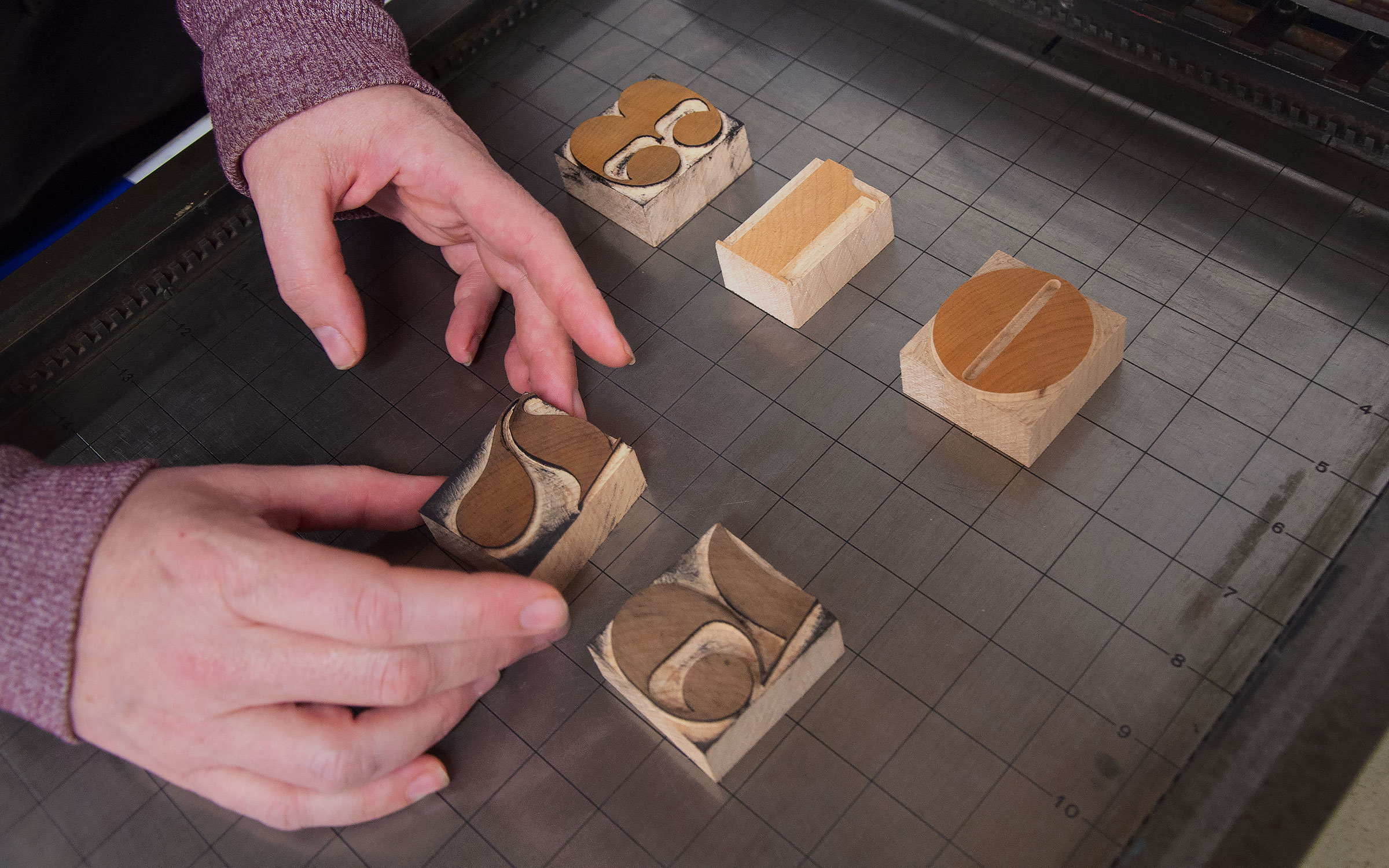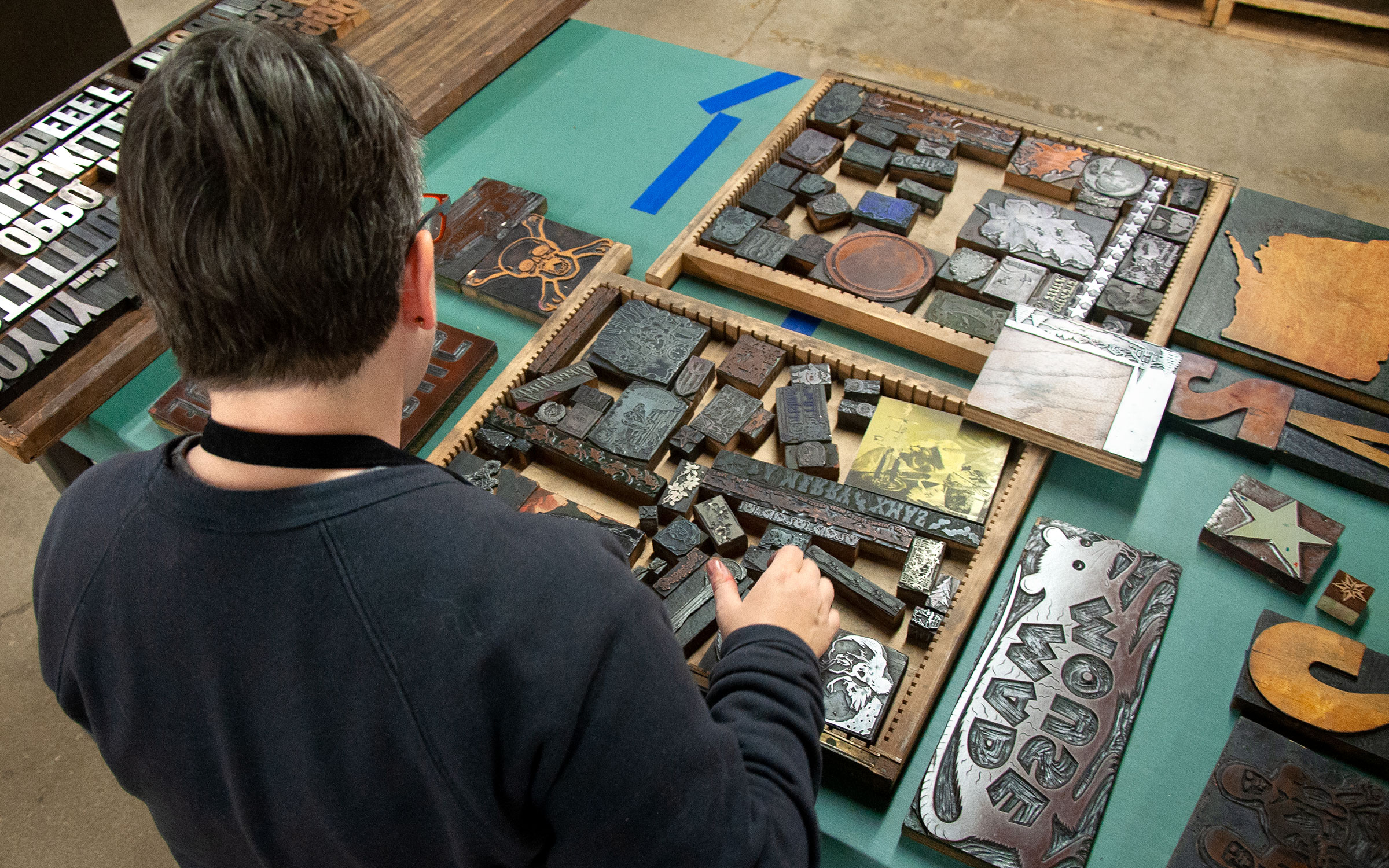Evocative of bold “wanted” posters and theater show-bills, wood type transformed the way people communicated in the 19th century. It initiated a paradigm shift in the printing industry, its popularity in large part due to the manufacturing process itself, which involved using a pantograph to scale the same style up or down as desired. That’s where we meet industrialist James Edward Hamilton from Two Rivers, Wisconsin, who founded the Hamilton Manufacturing Company in 1880. Fast-forward nearly 150 years later, and the Hamilton Wood Type and Printing Museum takes a 21st-century approach to preserving a historic craft.
Unlike many museum collections, Hamilton’s doesn’t just sit in an archive. Its 1.5 million—and growing—pieces of dazzling wood type spill from cases or “sorts;” dozens of printing presses fill the 40,000-square-foot exhibition space; and a large, communal studio area invites workshop participants and artists to learn how to print.

“We’re a working museum,” says Assistant Director Stephanie Carpenter. “That’s a huge part of it for us, that we can teach letterpress printing with original Hamilton type.”
Carpenter was introduced to Hamilton while in a graduate program at Indiana University, regularly making the seven-hour drive up to Two Rivers to help Master Printer and then-Director Jim Moran on weekends. She joined the museum formally in 2011, when it was still located in the original Hamilton factory building, which has since been demolished. In 2012, the team were told they had six months to vacate, and an extraordinary effort from community members and volunteers helped move 27 semi-loads of type and equipment to the current space, another former factory building. The museum celebrates its 25th anniversary next year.

Pressing On
Weekly, type carvers at the museum produce new blocks as part of the Type Legacy Project, creating new sets that can be added to institutional collections. “It’s crazy that people in the 21st century are designing for wood type,” Carpenter says. “It’s also available digitally, so students will use it through the Adobe program to design with it, and if their school has the wood type, they can then move into the press room and print using their digital mock-ups. That’s one of our programs that I absolutely adore, because it means that it’s also hands-on and it’s bringing that history forward.”
Recently, Hamilton welcomed artists Melissa Blount, Jenn Graves, and Desiree Aspiras for the first BIWOC—Black, Indigenous and Women of Color—Summit. Carpenter helped to organize a week-long residency in the print room, which evolved from a conversation with Blount and Graves about the representation of women of color in the letterpress community.
“They said, ‘You need Black women represented here, on your walls, doing things,’” Carpenter says. While the gathering was initially intended to include a large number of participants, three were able to make the trip, but that put no damper on the enthusiasm. “That energy that three people brought to that space! Blown away. It was so dynamic.”
Hamilton offers a variety of workshops throughout the year, ranging from printing basics to collaborations with local artists who share special techniques. Every week at the local farmer’s market, the museum sets up shop to invite community members to make prints they can take home with them. Every year, the museum hosts Wayzgoose, an annual conference for type- and print-lovers, and biannually they celebrate Really Big Prints, inviting local artists to think extra big and use steam rollers to make large-scale pieces.





“We definitely talk about our multiple communities,” says Carpenter. “We have locals who might know the history of the factory, or they might just be interested in taking art classes. And then there is an amazing letterpress community. They’re all around the country, all around the world. I think being interconnected with that community, both for me as a person and as part of the Hamilton team, is so rewarding.”
